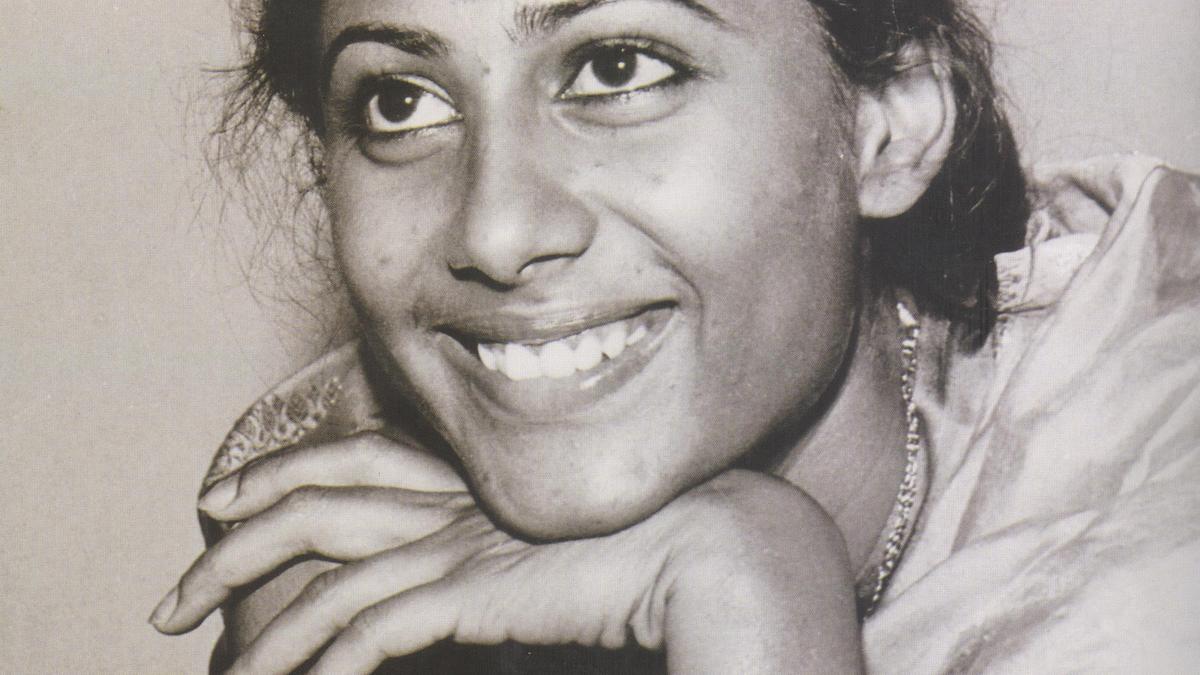
How Smita Patil moved movie-goers with her performance in Manthan
The Hindu
The inimitable Smita Patil
In 1976, Indian cinema did something unheard of! A one-of-a-kind movie called Manthan (The Churning) was funded by half a million dairy farmers themselves. Directed by Shyam Benegal, a torchbearer of independent Indian cinema, the film was inspired by the milk revolution pioneered by the Verghese Kurien. Girish Karnad’s character in the film was based on him. Along with a stellar cast of Naseeruddin Shah, Amrish Puri and Kulbhushan Kharbanda, the ground-breaking film also starred a 20 something Smita Patil as the feisty Bindu, who leads a revolt against the milk mafia. As a young woman caught in the caste and gender complexities of life in rural India, she exuded a vulnerability that tugged at audience’s heartstrings.
Almost 50 years after its release, Manthan was back in the spotlight when it was recently screened at the 77th Cannes Film Festival, alongside classics by Jean-Luc Godard, Akira Kurosawa and Wim Wenders. Following a successful film festival run, the restored version of Manthan hit the big screen in 50 cities and 100 theatres across the country spiralling a renewed interest in Smita Patil’s searingly brilliant work as one of India’s earliest parallel cinema superstars.
She was born in Pune on October 17, 1955 to a Maharashtrian politician Shivajirao Girdhar Patil and social worker mother Vidyatai Patil, a city that also boasted a thriving theatre scene that nurtured acclaimed directors such as Vijay Tendulkar and Jabbar Patel, who later transitioned into filmmaking. Furthermore, Pune housed the prestigious FTII, a breeding ground for the Indian New Wave cinema movement, which aimed for realistic portrayals of society and the human condition. This environment heavily influenced Smita’s early career, though she never really intended to be an actor. Even while studying at Elphinstone College in Mumbai, her striking beauty led to her being featured in student films and even landing a newsreader’s job in Doordarshan. Her debut film, Teevra Madhyam (1974), was an FTII project directed by Arun Khopkar. Shyam Benegal gave her a break in Charandas Chor (1975), which set the ball rolling for one of Bollywood’s most illustrious and tragically short-lived careers.
Smita dominated the 1970s and early 80s with a series of intense, driven portraits of formidably strong women discovering their own agency. This included films such as Manthan (1976), Jait Re Jait (Marathi, 1977), Bhumika (1977), Akaler Sandhane (Bengali, 1981), Chakra (1981), Umbartha (Marathi, 1982; Subah in Hindi), Arth (1982), Bazaar (1982), Tarang (1984) and Aakhir Kyon? (1985). I. “Small cinema began with the portrayal of the real Indian woman, who happens to be very much a ‘zamin ki aurat’ (woman of the earth). I am continuing to do earthy roles because I am that sort of a person myself. I was fortunate that I could extend the kind of person I am to the roles that were given to me in the beginning of my career,” she said in an interview in 1985.
No one can possibly dispute Smita’s enormous range, her vocal and physical craft, and her peerless skill at conveying complexity, intensity and humanity. She along with collaborators and competitors Shabana Azmi and Deepti Naval, brought a whole new perspective to what female characters could be and accomplish. Unlike most Bollywood films, which tend to focus on portraying women as attractive but powerless objects trapped in dramatic situations, these actors played characters that blazed a trail . Only a few actors before them managed to defy the stereotype and capture the audience’s attention. Smita in her early prime had it all: a glorious unpredictability, a flawless technique, an intellectualised approach, and a deep, personal subsumption in every role.
Being a poster girl of the parallel or new wave cinema, didn’t deter Smita from jumping over to the glitzy side of Bollywood and taking on purely commercial roles, something she had previously avoided. Her performances in movies like Albert Pinto Ko Gussa Kyon Aata Hai, Shakti, Namak Halaal, and Aakhir Kyon solidified her reputation as a highly adaptable actress.
On the personal front Patil was a free-spirited, adventurous soul who cruised the streets of Pune on her bike, wearing her soiled blue jeans. The actor also drove the military Jonga jeep from Delhi through the Chambal Valley to Bombay. A skilled photographer with a discerning eye, she was also a well-rounded aesthete, equally comfortable creating costumes and crafting the visual world of her films as a production designer. Sadly, her life was cut short at 31. And though the 70-odd films (in Hindi, Marathi, Bengali, Telugu, and Malayalam) that Smita Patil did in the decade that was her career earned her both critical praise and box office triumphs, it’s impossible not to wonder what incredible things she would have accomplished if she had lived longer.





















 Run 3 Space | Play Space Running Game
Run 3 Space | Play Space Running Game Traffic Jam 3D | Online Racing Game
Traffic Jam 3D | Online Racing Game Duck Hunt | Play Old Classic Game
Duck Hunt | Play Old Classic Game











